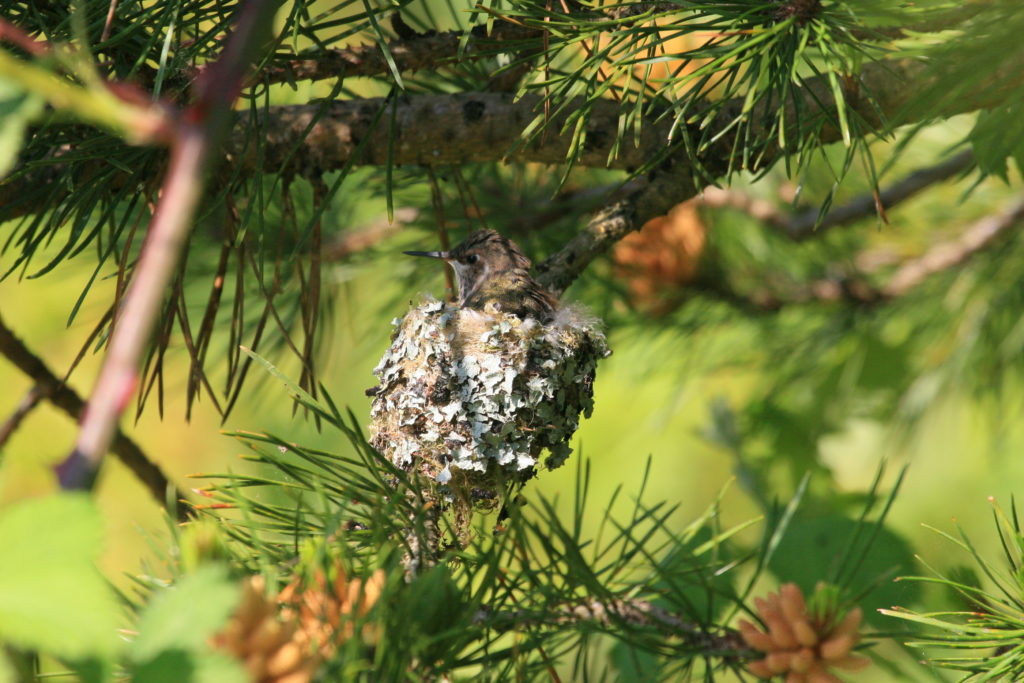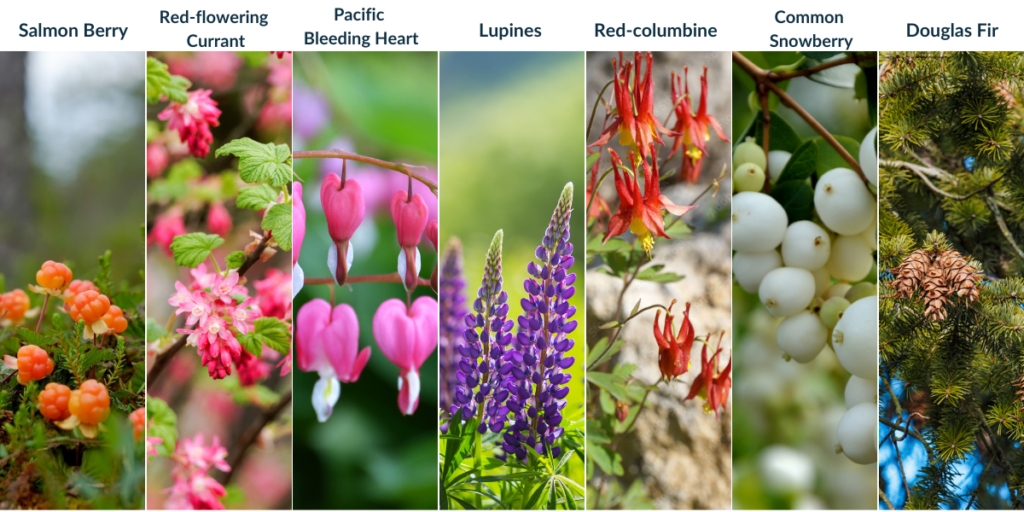Support Us
Since 1979 more than 140,000 animals have been treated by Wildlife Rescue.
Thanks to the support of individuals like you, Wildlife Rescue can provide a lifeline for animals in distress.
Your garden can help wildlife! One way to make a significant difference for local wildlife is by allowing your yard to become a corridor of quality habitat while preparing for spring. Being intentional with your gardening can help the wildlife in your area thrive.
Keep an eye out for nesting birds when you are working on trees or undergrowth, as they are not always easy to spot!
In the Lower Mainland, the nesting period for most songbirds is between March 1 and August 31. Different species have different nesting behaviours and timing may be dependent on temperature or specific food availability.
Unless the tree is presenting a safety issue, the best practice is to schedule maintenance between September 1 to February 28 as to not disturb nesting wildlife. Some species, like hummingbirds, nest as early as December. It is always best to observe the tree beforehand, watching and listening for nest activity.

As the weather is getting warmer, we know that you are likely getting ready to prepare your garden for springtime, but we encourage you to keep any fallen leaves where they are. Leaves provide an important source of food and nesting material for wildlife, and refuge for overwintering pollinators like bees and butterflies.
If you must get rid of your leaves, wait until temperatures are consistently 10 degrees Celsius or higher before cleaning up. This will give these beneficial insects time to wake up for spring.
You can support wildlife by replacing your lawn with plants! This way your greenspace can support their foraging and provide them with shelter.
When it’s time to start planting, try opting for native plants for your yard or balcony. These species help feed hummingbirds and berry eaters. As an added bonus, you’ll attract all kinds of wildlife visitors to your yard without needing to maintain a feeder!
These are some of the native species you can plant in BC:

While the intended purpose of pesticides is to control pests, insects and weeds, these chemicals can be very harmful to wildlife.
Even though pesticides are often used only in specific areas such as lawns or gardens, rain can cause these chemicals to leach into local streams and rivers. This can kill invertebrates, and fish, which birds and other wildlife rely on as sources of food. These pesticides can sicken wildlife who ingest contaminated water and food, or absorb the poisons in the water through their skin. Rodenticides can harm, and even kill, raptors and mammals who eat poisoned rats and mice.
These are some recommended pesticide alternatives:
Gardening steps you can take to help prevent the need for pesticides:
All bird species have different nesting requirements. To become a successful bird house builder, see what each species requires here. Some of them can be picky!
You can create a bat roosting habitat by building a bat-house. To have it be successful in supporting bats, it’s important to do it correctly. You can find more guidance on bat houses here.